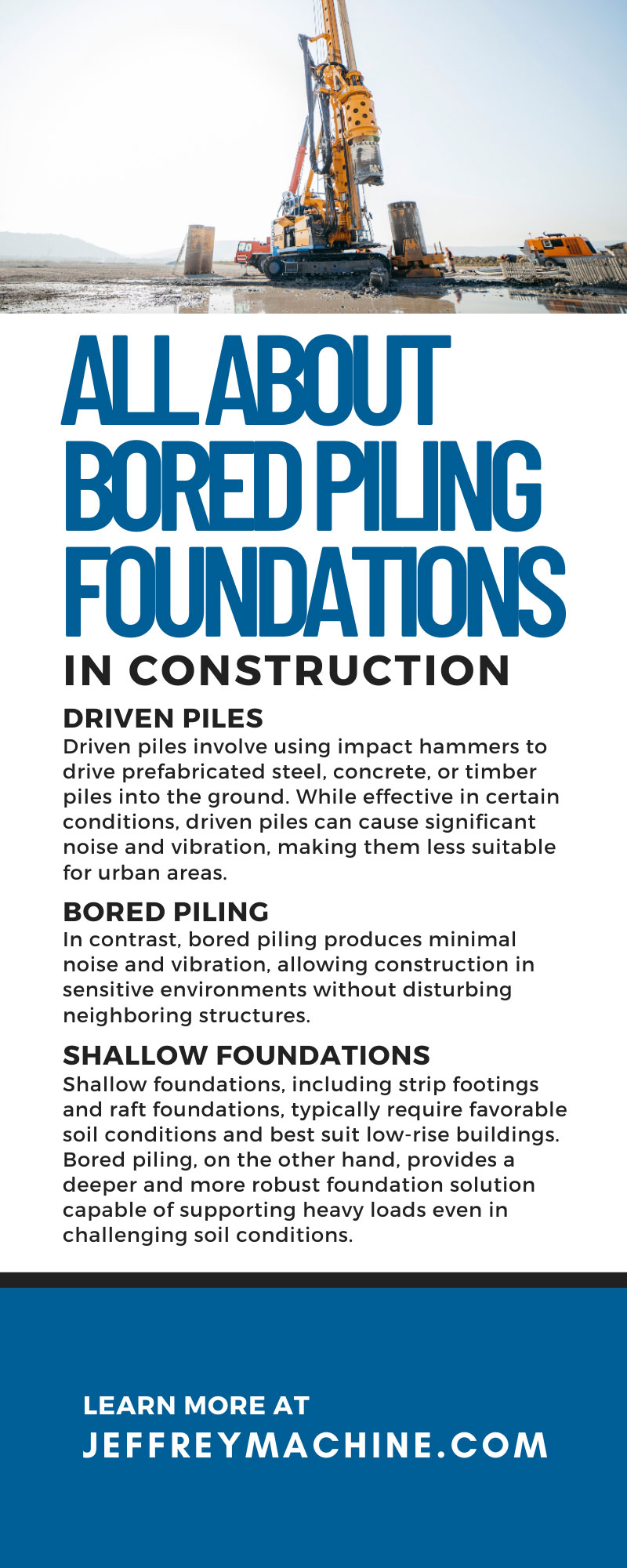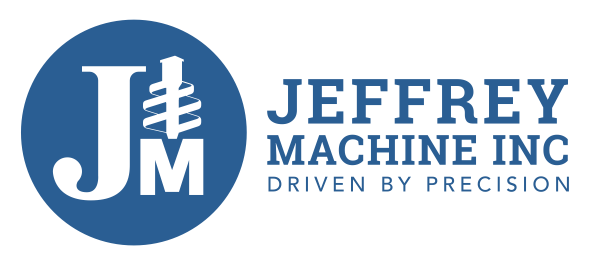All About Bored Piling Foundations in Construction

Understanding the complexities of a construction project is crucial for professionals in the industry. Bored piling is one foundational technique that has gained prominence. Learn all about bored piling foundations in construction in this post to better understand their use and importance in the industry.
Why Is Bored Piling in Construction Important?
Understanding construction bored piling is crucial for professionals seeking to optimize their projects’ stability and longevity. The versatility, load-bearing capacity, and minimal environmental impact of bored piling make it a preferred choice for various construction scenarios. Professionals can make better decisions by comprehensively understanding the process, equipment, and site considerations involved in bored piling.
What Is the Purpose of Bored Piling in Construction?
The primary purpose of bored piling is to support buildings and structures by transferring their loads to deeper, more stable soil layers. This process is particularly advantageous for high-rise buildings, bridges, and other large-scale constructions. Its use in various soil types, including those with high water tables, is one of the critical benefits of bored piling. Bored piles create minimal vibration and noise when crews install them in urban or sensitive environments.
How Bored Piling Works: Process, Equipment, and Site Considerations
Understanding the process is essential for crews to fully appreciate the significance of bored piling. The construction process starts with a site investigation to determine soil conditions and identify the appropriate pile length and diameter. Once this preliminary step is complete, specialized equipment such as rotary drilling rigs or CFA (Continuous Flight Auger) rigs come to the site.
Drilling Process Overview
The drilling process begins by positioning the rig over the designated pile location. The rig then drills a hole to the required depth, removing soil and rock as it progresses. Depending on the project requirements, temporary casings or drilling fluids may stabilize the borehole. Construction crews lower reinforcement cages into the hole and pour in concrete after reaching the desired depth.
Ensuring Concrete Quality
It is critical to ensure that the concrete is of high quality and free from contamination. The use of tremie pipes helps with placing concrete underwater without segregation, which is particularly important when dealing with high water tables. Completing a bored pile requires meticulous attention to detail and adherence to safety standards, such as checking borehole stability, groundwater conditions, and equipment capabilities.
Bored Piling vs. Other Foundation Techniques
Crews should compare the advantages and limitations of different methods when selecting a foundation technique. While several options are available, such as driven piles, shallow foundations, and micropiles, bored piling stands out due to its versatility and adaptability.
Driven Piles
Driven piles involve using impact hammers to drive prefabricated steel, concrete, or timber piles into the ground. While effective in certain conditions, driven piles can cause significant noise and vibration, making them less suitable for urban areas.
Bored Piling
In contrast, bored piling produces minimal noise and vibration, allowing construction in sensitive environments without disturbing neighboring structures.
Shallow Foundations
Shallow foundations, including strip footings and raft foundations, typically require favorable soil conditions and best suit low-rise buildings. Bored piling, on the other hand, provides a deeper and more robust foundation solution capable of supporting heavy loads even in challenging soil conditions.
Micropiles
Micropiles, which are small-diameter piles, offer an alternative for limited access sites or areas with restricted headroom. While applicable in specific scenarios, micropiles may not provide the same load-bearing capacity as bored piles, making them less suitable for larger projects.
Best Practices and Challenges in Bored Piling
Following best practices in bored piling also builds onto the commitment to identify logistical considerations and actively minimize environmental impact so you get the most out of using this method. In bored piling, safety is also essential. It is a challenge various construction professionals might struggle to resolve. However, proper training, operational certification, and strict adherence to safety protocols are crucial to prevent accidents and ensure workers’ well-being.
Quality Assurance and Technical Challenges
Quality assurance is crucial for the integrity and reliability of bored piles. Verifying pile quality involves regular inspections and tests, such as pile integrity testing (PIT) and crosshole sonic logging (CSL). These tests identify defects and ensure the bored piles meet expectations. However, unpredictable soil conditions can complicate drilling, causing borehole instability and excessive wear on the equipment. Thorough geotechnical investigations are essential to understand subsurface conditions before starting work. Ensuring pile integrity can be challenging, especially when using temporary casings or drilling fluids to stabilize the borehole. These methods can introduce complexities without damaging the pile during casing removals, ensuring drilling fluids do not compromise the concrete’s quality.
Logistical Considerations and Challenges
Coordinating transport and assembly of large, specialized equipment in urban or restricted areas can be challenging. The need for a stable power supply and sufficient water for drilling further complicates logistics, especially in remote areas. Minimizing disruption to surrounding communities and existing infrastructure is essential. While bored piling is quieter and produces less vibration than other methods, large projects still require careful planning to manage noise, dust, and site traffic effectively.
Benefits of Best Practices
Implementing these best practices enhances the overall quality of the project and contributes to the built environment’s sustainability and longevity. Construction professionals can achieve successful outcomes with bored piling by prioritizing safety, minimizing environmental impact, ensuring quality assurance, and addressing logistical challenges.
What truly makes this impactful? Get a deeper understanding of the best practices for bored piling construction below.
1. Prioritizing Safety
Implementing best practices places a strong emphasis on safety procedures. Construction professionals maintain the site’s efficacy by prioritizing safety. Prioritizing safety ultimately leads to a more secure and efficient work environment.
2. Minimizing Environmental Impact
You will incorporate things that help improve the environment, not deconstruct it when using preferred methods for any process. The industry can minimize damage to the surrounding environment and contribute to sustainability by using eco-friendly materials and techniques.
3. Ensuring Quality Assurance
Adhering to best practices guarantees that the quality of the project meets high standards. Rigorous quality control measures lead to superior construction outcomes, ensuring the built environment is durable and resilient.
4. Addressing Logistical Challenges
Effective best practices include planning and managing logistical aspects of construction projects. These plans help mitigate potential delays and issues, ensuring that crews can complete their projects on time and within budget.
Overall Impact
Construction professionals can enhance the overall quality of their projects by incorporating these best practices. Therefore, these practices are crucial for successful outcomes in bored piling and other construction activities, leading to sustainable and long-lasting developments.
Evolve With Jeffrey Machine
Incorporating bored piling foundations in construction requires you to meet the demands of modern infrastructure. We encourage you to connect with our team at Jeffrey Machine to further explore the potential of bored piling and other innovative equipment. Our insights and expertise in auger flighting, foundation solutions, and the proper tools for each project will elevate your next job to new heights. Embrace the power of bored piling and partner with us to learn more about the most innovative solutions to your foundation needs.

